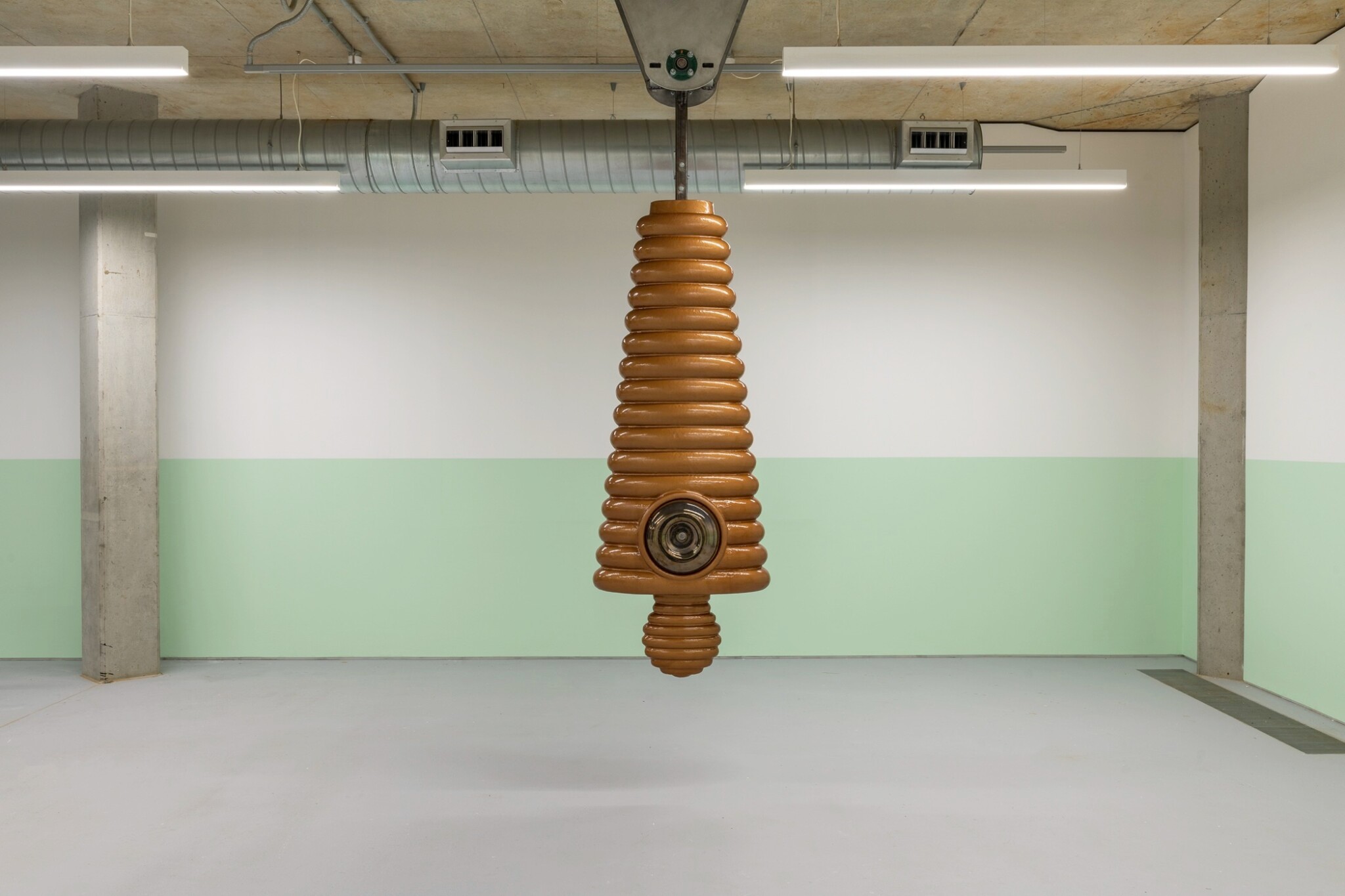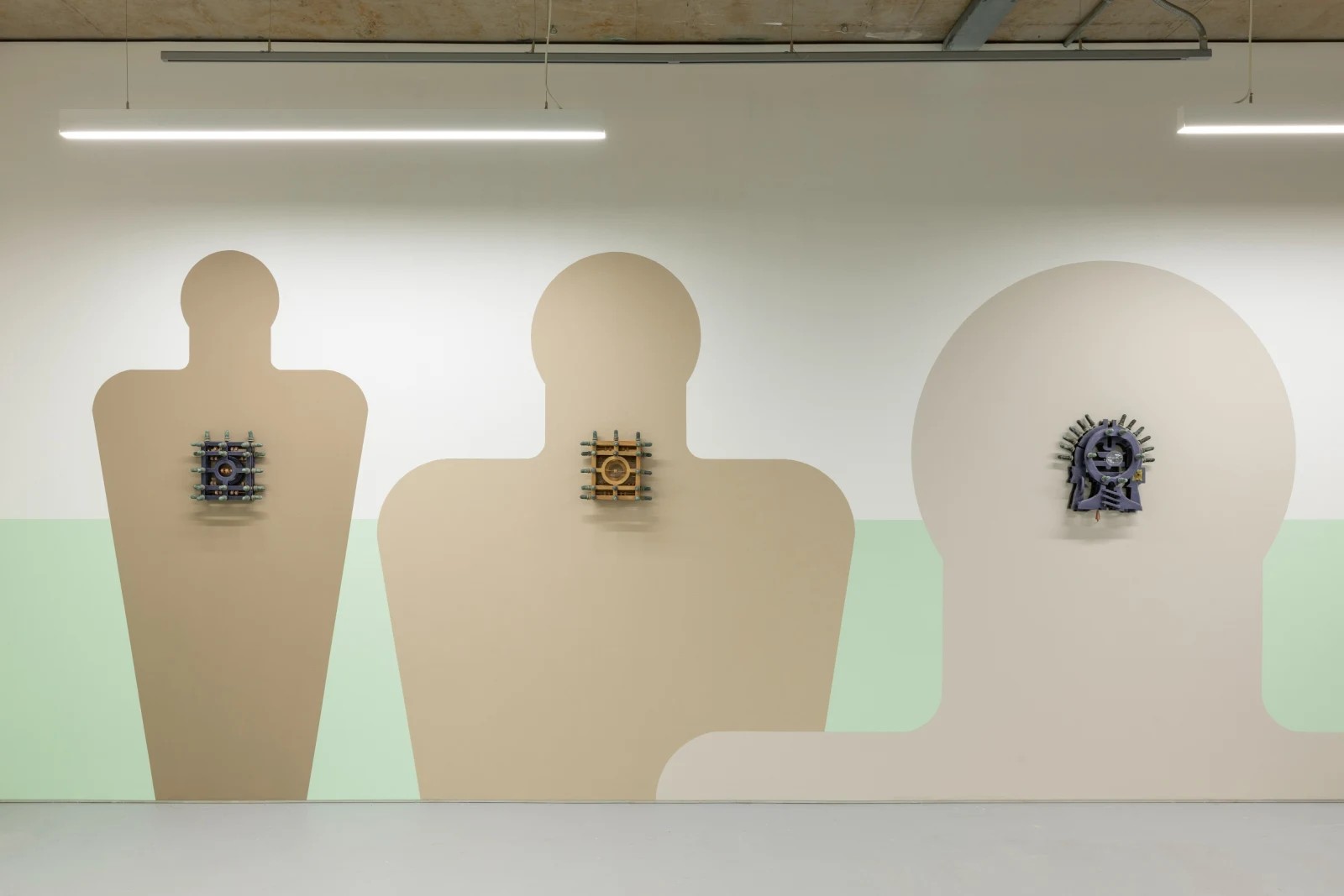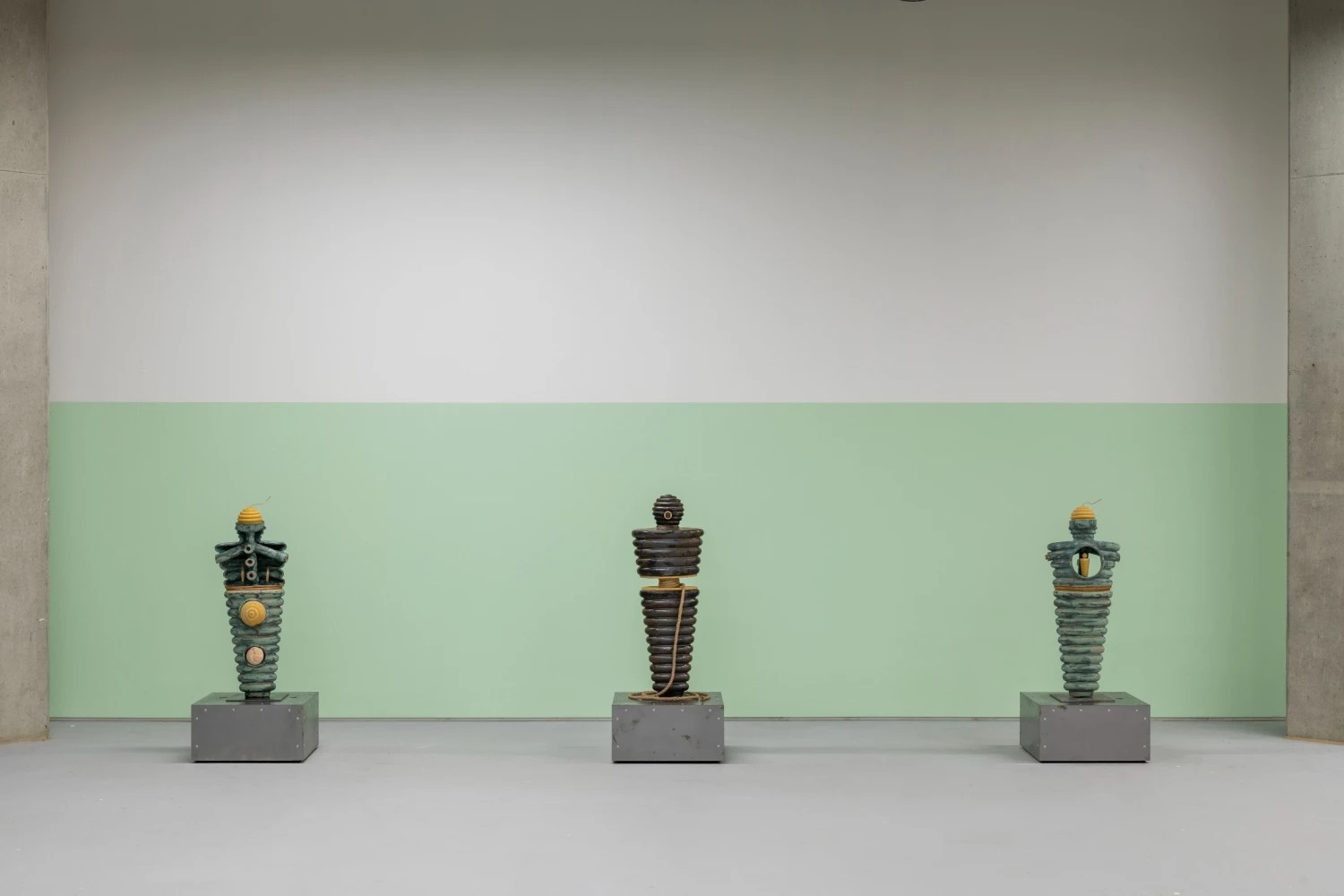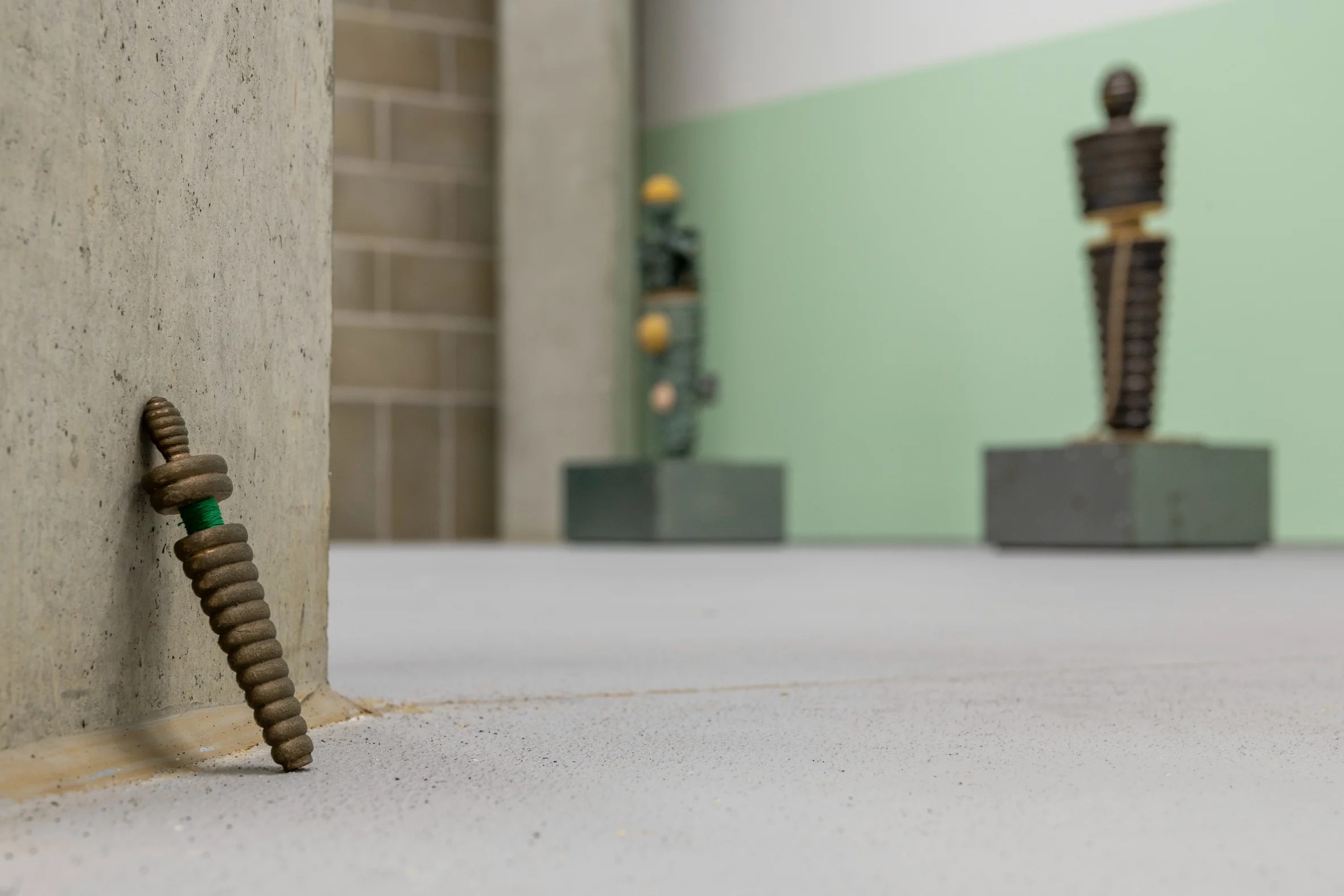Hannah Barry Gallery x Foolscap Editions, London
Editor
2025
Lo Brutto Stahl, Paris & Basel
Exhibition Text
2024
Hannah Barry Gallery x Foolscap Editions, London
Editor
2024
émergent, London
Interview
2024
DUVE, Berlin
Exhibition Text
2024
émergent, London
Interview
2024
Incubator, London
Exhibition Text
2023
QUEERCIRCLE, London
Exhibition Text
2023
Credited as the one of the first factories established in England, Sir Richard Arkwright’s cotton mill, built in 1771, was a cornerstone of the Industrial Revolution. Captured in Joseph Wright’s famous Arkwright’s Cotton Mill by Night (1782), a dark moonlit landscape is illuminated by the windows of an incongruous, stout multi-storey building façade receding into a wooded Derbyshire landscape. It has long been interpreted as symbolising the impact of factory production on rural life, inserting a brute and unprecedented architectural form into an otherwise untamed and picturesque countryside. More than this, however — and perhaps most unsettling — is the nocturnal glow of the gas-lamps, the erosion of any distinction between night and day, the distant yet now familiar hum of a twenty-four-hour working world.
Arkwright’s cotton mill, much the same as the textile factory that employed Rafał Zajko’s grandparents during the late 20th century in Białystok, Poland, was organised into relentless work patterns. In the latter case, three revolving 8-hour shifts that drove the sleepless machine of textile production that Zajko would often visit after school. Within this system, time is ruthlessly regimented, disciplined and instrumentalised. Jacquard looms, a pioneering technology and weaving system, churn furiously in a frenzied choreography of man and machine. Vast assemblages of flesh, hormones, steel, electricity and fabric. The capture and transmission of energy, bodies augmented and enhanced, individuals reduced to cold industrial units; a reality made most visceral through Zajko’s titular reference to the procedural punch cards used by factory workers to mechanically clock in and out of their shift.
The gallery at QUEERCIRCLE, itself with bare concrete columns, exposed electrical and extraction conduits hanging overhead, here becomes the context of Clocking Off, Zajko’s reimagined and abstracted factory floor—one which, as with much of Zajko’s work, uses personal memories of his childhood and family history in post-communist Poland as the foundations to create a shifting—and at times conflicting—picture of the contemporary relationship between modernity, time, technology and the human. Framed by a soft horizon line of cool seafoam green, a light mosslike pigment typically used in factories not only to repel dirt but for its calming and stress-releasing properties, the exhibition marries the hard grammar of industrial labour with Zajko’s voluptuous ceramic line-language to create an enveloping mixture of desire, dislocation, anxiety and nostalgia.
This uneasiness is felt immediately in the performative aspects of the exhibition. Small urn-like figures, Bobbin I - III, replete with frozen synthetic sweat-crowns and spool-esque chests, quietly leak through internal conduits, secreting chemicals typically used to test fabric quality in the textile industry through small holes in their steel bases. A larger quasi-religious sculpture, Herm, featuring a prosthetic aged knee cap slowly discolours and stains, oozing the same material over a minimalist steel plinth and gutter that slowly oxidises over time. And finally, the affronting Sisyphus, a colossal kinetic pendulum sculpture rhythmically driving back and forth through the gallery; the feeling inferred is one of perpetual arrested exhaustion, alienating the human body from dozens of complex biological ‘clocks’ or coexisting rhythms that exist within each of us—cardiac, digestive, nervous, molecular—in service of a singular and monolithic, monotonised machine time.
All are overseen by Zajko’s signature use of graphic backdrop, in this case featuring the abstracted silhouette of three figures approaching the factory floor. These figures host three smaller wall-based sculptures, Progress Fatigue I – III, meticulously composed ceramic pieces that artfully entwine human anatomy with suggestive mechanical levers, embedded abacus rails lined with child-sized bobbins and computer hardware. The shadows behind convey a sense of militant anonymity, their colour not unlike the grey jumpsuits worn by workers in the authoritarian state of1984, evoking not only the paranoia of pervasive surveillance but also the horrors of conscription, war and propaganda. A tension sharpened by the rhythmic tick-tock of the pendulum, pulsing us in and out from observer to observed, like marching boots lost in the forest, slowly losing track of time.
Indeed, it is clear that a number of anxieties are embedded in the framework of Clocking Off: feelings of homesickness and nostalgia, fears of post-industrial decline, the denigration of worker’s rights, industry, conflict and war. And yet despite this, I can see that the exhibition speaks equally to a culture of gratification and desire: that one might enjoy, however perversely, the hysterical, masochistic exhaustion of the mines, the foundries and factories. That emulating the impervious rhythms, efficiency and dynamism of mechanisation, the choreography of the machine and extension of one’s body to an assemblage of organic, chemical and machinic processes, is something to embrace if not celebrate. Throughout there is a sense of arrested satisfaction—but the yearning for it nonetheless remains in all its messy, complicated and vexed desire.
For me, these works do for textile production what Richard Hamilton once did for the automobile, they sublimate, exploit, delight in and affirm technological process as a vehicle for desire— connected to, through and with the body. Clocking Off exposes a series of libidinal displacements and investments that register how, in a single moment, it is both we who have engineered machines and machines that have engineered us. And that in spite of omnipresent proclamations of the compatibility, even harmonization, between human time and the temporalities of industrial systems, the lived realities of this relationship are filled with disjunctions, fractures, and continual disequilibrium.




L.U.P.O., Milan
Catalogue Essay
2023
Tarmac Press, Herne Bay
Catalogue Essay
2023
Brooke Bennington, London
Exhibition Text
2023
Freelands Foundation, London
Catalogue Essay
2023
superzoom, Paris
Exhibition Text
2023
Lichen Books, London
Catalogue Essay
2022
Tennis Elbow, New York
Exhibition Text
2022
émergent, London
Interview
2022
Guts Gallery, London
Exhibition Text
2021
Kupfer Projects, London
Exhibition Text
2021
Collective Ending, London
Catalogue Essay
2021
L21 Gallery S’Escorxador, Palma De Mallorca
Exhibition Text
2021
TJ Boulting, London
Exhibition Text
2021
Quench Gallery, Margate
Exhibition Text
2021
COEVAL, Berlin
Interview
2021
COEVAL, Berlin
Interview
2021
Foolscap Editions, London
Catalogue Essay
2020
Gentrified Underground, Zurich
Catalogue Essay
2020
Camberwell College of Arts, London
Exhibition Text
2019
Kronos Publishing, London
Editor
2019
Elam Publishing, London
Editor
2019
William Bennington Gallery, London
Catalogue Essay
2019
Elam Publishing, London
Catalogue Essay
2018
Camberwell College of Arts, London
Exhibition Text
2018
Limbo Limbo, London
Exhibition Text
2017
Saatchi Art & Music Magazine, London
Review
2017
B.A.E.S., London
Exhibition Text
2016